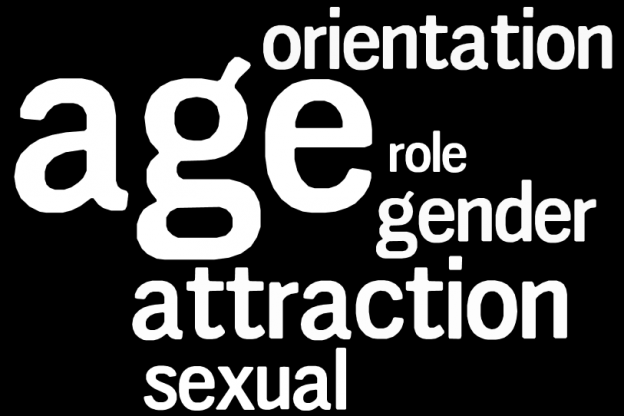Similarity In Age Preference For Mate Selection
 I find in a lot of the topics I research, there is often a focus on “differences”…differences in gender, age, sexual orientation, socioeconomic status, etc. One of the things that I have taken away from research I’ve conducted is that there are frequently more differences within groups than there are between groups.
I find in a lot of the topics I research, there is often a focus on “differences”…differences in gender, age, sexual orientation, socioeconomic status, etc. One of the things that I have taken away from research I’ve conducted is that there are frequently more differences within groups than there are between groups.
A recent study conducted by Kathy Burrows, a graduate student in sociology at Rutgers University, examined differences in sexual orientation with regard to age preferences for a potential mate. She found, similar to many of my findings, that there were more differences within groups than there were between. The study, “Age Preferences in Dating Advertisements by Homosexuals and Heterosexual: From Sociobiological to Sociological Explanations”, was recently published in the Archives of Sexual Behavior.
Burrows wrote the article based on the common sociobiological thought that we choose our mates based on their ability to both produce and support offspring is perhaps not the most important predictor of our current day mate choices. The most obvious flaw to this theory is its inability to explain the mate selection of gay men, which was the target population in the current study.
By analyzing 120 dating advertisements from gay men and heterosexual men and women, Burrows examined age hypergamy – the tendency for men to be attracted to younger women and women to be attracted to older men – and found the theory, though present, was incomplete for both heterosexual and homosexual participants.
Burrows proposed that in the context of couples who can’t biologically reproduce with each other, age hypergamy, if it exists, must have an alternative explanation. She predicted that this alternative explaination had to do with gender role identification.
The study had two hypotheses:
- Gay men who associate more strongly with the traditional American masculine gender role will seek a partner who is younger (similar to what heterosexual men desire).
- Gay men who associate more strongly with the traditional American feminine gender role will seek a partner who is older (similar to what heterosexual females desire).
This study was based on data from 30 heterosexual male advertisers, 30 heterosexual female advertisers, 30 gay male advertisers who self-identified as more masculine, and 30 gay male advertisers who self-identified as more feminine. All of the advertisers were around the same age (ranged from 37.7 to 39.9 years). There were eight sources that advertisements were taken from; all online versions of newspapers. The methodology was actually pretty detailed, and if you’re interested in more information about that, definitely check out the original article.
For each of the ads that met the criteria, the advertisers age, their lowest and highest age sought, and self-gender-role language used was recorded.
Both hypotheses were supported:
- Masculine gay men desired a partner with an average age range 13 years younger to 1 year older than themselves
- Heterosexual men desired a partner with an average age range 14 years younger to 6 years older than themselves
- Feminine gay men desired a partner with an average age range 4 years younger to 11 years older than themselves
- Heterosexual females desired a partner with an average age range 3 years younger to 10 years older than themselves
These findings were contextualized using meme theory – which is similar to the biological ideas of Darwinian evolution and reproductive fitness, but rather than based on biology, it is based on cultural practices. Therefore, by removing the biological determinism of being unable to reproduce, meme theory allows us to examine this phenomenon in terms ofgender expression with masculine people wishing to marry younger (more feminine) people, and feminine people wishing to marry older (more masculine) people.
There are certainly some limitations in the generalizability of this research. My main concern is the blaring question of who even uses online newspaper advertisements to find mates anymore? I think this study would have been much more interesting, relevant, and generalizable if conducted using an online dating site, rather than online magazine advertisements. Despite this fairly substantial limitation, I think the take-away message here is that there is variation within each sexual orientation, and putting people into categories based on orientation (or gender, age, socioeconomic status, etc.) isn’t always the best approach to research. Considering the cultural components, in this case gender role identification, proved to be a more comprehensive approach to the research question of interest.
This post was originally on Kinsey Confidential.
 Kristen Mark
Kristen Mark



